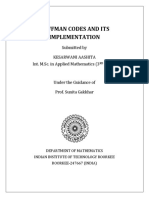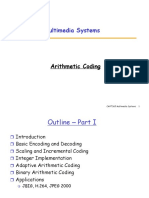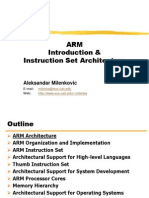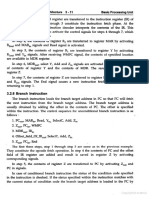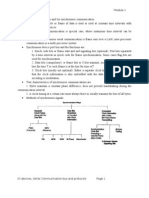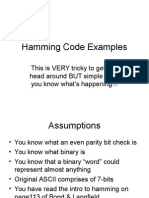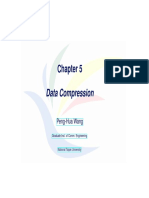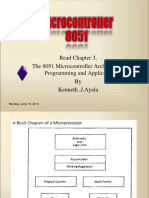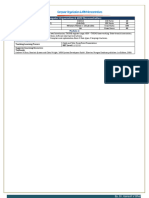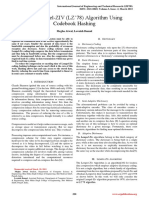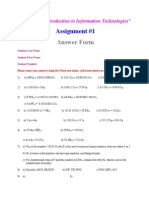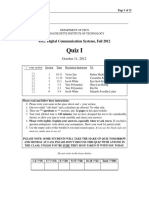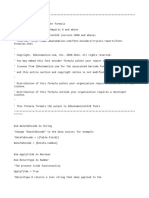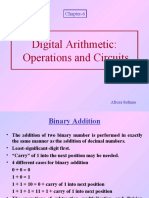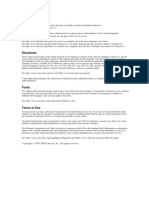0% found this document useful (0 votes)
173 views40 pagesHuffman Coding
Huffman coding is an algorithm that creates a variable-length prefix code to encode messages. It builds a binary tree based on symbol frequencies, with more frequent symbols nearer the root. Each symbol is assigned a code consisting of the path from root to its leaf node. This results in shorter codes for more frequent symbols, allowing the entire message to be encoded using the fewest possible bits compared to any other prefix code.
Uploaded by
Ricardo Lazo Jr.Copyright
© © All Rights Reserved
We take content rights seriously. If you suspect this is your content, claim it here.
Available Formats
Download as PPTX, PDF, TXT or read online on Scribd
0% found this document useful (0 votes)
173 views40 pagesHuffman Coding
Huffman coding is an algorithm that creates a variable-length prefix code to encode messages. It builds a binary tree based on symbol frequencies, with more frequent symbols nearer the root. Each symbol is assigned a code consisting of the path from root to its leaf node. This results in shorter codes for more frequent symbols, allowing the entire message to be encoded using the fewest possible bits compared to any other prefix code.
Uploaded by
Ricardo Lazo Jr.Copyright
© © All Rights Reserved
We take content rights seriously. If you suspect this is your content, claim it here.
Available Formats
Download as PPTX, PDF, TXT or read online on Scribd
/ 40
